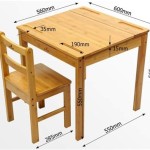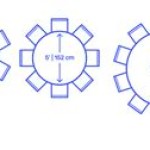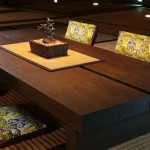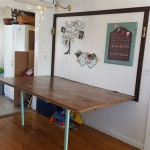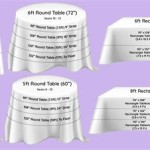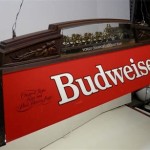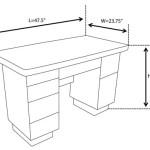The Practical Elegance of a Gray Baby Dresser with Changing Table
A gray baby dresser with changing table represents a popular and functional furniture choice for modern nurseries. Combining the storage space of a dresser with the convenience of a dedicated changing surface, these units offer a practical solution for parents seeking to maximize space and efficiency. The neutral gray color palette allows for seamless integration into a variety of nursery design schemes, providing a versatile foundation upon which to build a stylish and comfortable environment for the child.
The purchasing of such a unit should involve careful consideration of various factors, including size, materials, safety features, and overall design. Understanding the nuances of these elements ensures that the selected dresser meets the specific needs of the family and the developing child. A well-chosen gray baby dresser with changing table can serve as a central piece of nursery furniture for years to come, adapting to the child's growth and changing needs.
This article aims to provide a comprehensive overview of gray baby dressers with integrated changing tables, exploring their benefits, key considerations when selecting a unit, and factors influencing their longevity and safety.
Storage Capacity and Organization
One of the primary advantages of a baby dresser with a changing table is its integrated storage capacity. Newborns and infants require a significant amount of clothing, diapers, wipes, lotions, and other essential items. A dresser with ample drawer space allows parents to efficiently organize these items, keeping them readily accessible for diaper changes and dressing routines. The number of drawers, their depth, and the presence of adjustable shelving within the dresser are all critical factors to evaluate.
Different dresser designs offer varying organization options. Some feature multiple shallow drawers, ideal for smaller items like socks, hats, and mittens. Others incorporate deeper drawers suited for storing larger clothing items, blankets, and linens. The ideal selection will balance the need for both types of storage, optimizing the use of available space. Consider the existing storage capabilities of the nursery when assessing the required capacity of the dresser.
Furthermore, the layout and construction of the drawer mechanisms can impact ease of use. Drawers that glide smoothly on metal runners are preferred over those that stick or require excessive force to open and close. Full-extension drawers, which allow access to the entire drawer contents, offer added convenience. Self-closing drawers can also be a valuable safety feature, preventing accidental slamming and potential injury.
The area surrounding the changing table itself can also offer added storage. Some models incorporate small shelves or cubbies located directly beneath or beside the changing surface. These compartments are ideal for storing frequently used items such as diapers, wipes, and rash cream, ensuring that they are always within arm's reach during diaper changes. This readily available storage contributes to a safer and more efficient changing process.
Safety Considerations and Compliance Standards
Safety is paramount when selecting any furniture intended for use by infants and young children. A gray baby dresser with changing table should adhere to stringent safety standards to minimize the risk of accidents and injuries. Look for dressers that are certified by reputable organizations such as the Juvenile Products Manufacturers Association (JPMA). JPMA certification indicates that the product has undergone rigorous testing to meet or exceed established safety requirements.
The structural integrity of the dresser is a crucial safety factor. The unit should be constructed from sturdy materials and designed to withstand the weight and activity of a growing child. Ensure that the dresser is stable and does not wobble or tip easily. Anti-tip hardware, which allows the dresser to be securely anchored to the wall, is an essential safety feature. This hardware prevents the dresser from tipping over if a child attempts to climb on it.
The changing table section of the dresser should also be designed with safety in mind. Raised sides or a contoured surface help to prevent the baby from rolling off the changing table. A safety strap can provide an additional layer of security, gently restraining the baby during diaper changes. The changing pad itself should be made from non-toxic materials and be easy to clean. Always use a waterproof changing pad cover to protect the pad from spills and messes.
The materials used in the construction of the dresser should be free from harmful chemicals such as lead, phthalates, and formaldehyde. These chemicals can pose health risks to infants and young children. Look for dressers that are labeled as being low-VOC (volatile organic compounds), indicating that they emit minimal amounts of potentially harmful gases into the air. Water-based finishes are generally considered to be safer than solvent-based finishes.
Regularly inspect the dresser for any signs of damage or wear. Tighten any loose screws or bolts, and repair or replace any damaged parts. Never allow a child to climb on the dresser, and always supervise them in the nursery. By taking these precautions, parents can help to ensure that their gray baby dresser with changing table remains a safe and functional piece of furniture for years to come.
Design and Aesthetic Versatility
The gray color of these dressers provides a neutral backdrop that complements a wide range of nursery themes and color palettes. Gray is a versatile color that can be easily paired with other colors, creating a soothing and visually appealing environment. Whether the nursery is decorated with pastel colors, vibrant hues, or a monochromatic scheme, a gray dresser can seamlessly integrate into the overall design.
Gray dressers are available in a variety of shades, ranging from light and airy to dark and sophisticated. A light gray dresser can create a bright and open feel, while a darker gray dresser can add a touch of drama and sophistication. The specific shade of gray should be chosen to complement the other colors in the nursery and create the desired ambiance.
The style of the dresser can also contribute to the overall aesthetic of the nursery. Dressers are available in a variety of styles, ranging from traditional to modern to rustic. A traditional dresser might feature ornate details and classic hardware, while a modern dresser might have clean lines and a minimalist design. A rustic dresser might incorporate natural materials such as wood and distressed finishes.
The hardware on the dresser, such as the knobs and pulls, can also influence its overall appearance. Simple, understated hardware can create a modern look, while more decorative hardware can add a touch of elegance. Consider the existing hardware in the nursery when selecting the hardware for the dresser to ensure a cohesive look.
Furthermore, the dresser can serve as a focal point in the nursery or blend seamlessly into the background. Consider the placement of the dresser in relation to other furniture and decor items. A strategically placed dresser can help to define different zones within the nursery, such as a sleeping area, a play area, and a changing area.
The addition of decorative accessories, such as artwork, lamps, and plants, can further enhance the aesthetic appeal of the dresser. These accessories can add personality and color to the nursery, creating a warm and inviting space for the child.
Beyond aesthetics, consider the long-term usability of the dresser. Some models are designed to convert into a standard dresser once the changing table is no longer needed. This feature extends the lifespan of the furniture and provides continued value as the child grows. The ability to remove the changing table portion and replace it with a coordinating top panel transforms the baby dresser into a timeless piece that can be used in a child's bedroom or even a guest room.
Finally, the finish of the dresser can impact both its appearance and its durability. A durable finish will resist scratches, dents, and stains, ensuring that the dresser looks its best for years to come. Consider the finish options available and choose one that is appropriate for the level of use the dresser will receive.
In summary, a gray baby dresser with changing table offers a practical and aesthetically pleasing solution for nursery furnishing. By carefully considering storage capacity, safety features, and design elements, parents can select a unit that meets their specific needs and creates a comfortable and stylish environment for their child.

Wiawg Gray 4 Drawers 44 9 In Width Changing Table Kids Dresser Nursery Storage Organizer With Shelf Amkf180079 04 The Home Depot

3 Drawer Dresser Baby Changing Diaper Table Nursery Room Gray Kids W Safety Belt

Storkcraft Brookside 2 Drawer Baby Changing Table Dresser Pebble Gray Com

Wiawg Gray 4 Drawers 44 9 In Width Changing Table Kids Dresser Nursery Storage Organizer With Shelf Amkf180079 04 The Home Depot

6 Drawer Double Dresser With Baby Crib And Changing Table Set In Slate Gray Com

Fufu Gaga 4 Drawer Gray Wood Kids Dresser Changing Table Storage Cabinet With Shelves 38 In H X 45 W 18 D Thd Kf180079 04 The Home Depot

Samyohome Baby Changing Dresser 3 Drawers Table Infant Gray Com

Charcoal Wood Baby Changing Table Topper For Dresser Crate Kids

Costway Baby Changing Table Dresser Infant Diaper Station Nursery With Pad Drawers Gray Target

Baby Crib With Changing Table And 6 Drawer Double Dresser Set In Weathered Gray

